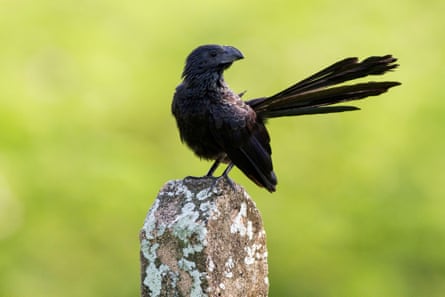More than a 100 wild animals including frogs, shrews and snakes were killed in a wildfire in Texas last summer, after becoming trapped behind the concrete border wall.
Internal US Fish and Wildlife Service (FWS) memos obtained by an environmental group reveal that government scientists found scores of burned animals against a mile-long stretch of the border wall last August, after a wildfire in the Lower Rio Grande Valley national wildlife refuge, a federally protected area.
According to the email from one biologist who visited the area in the aftermath, the concrete border wall “impeded the escape of wildlife from the fire” – which swept through the long grass, rapidly scorching about 1,500 acres thanks to high winds and dry conditions.
“… This is a good reminder of the impact the border wall can have on wildlife movement, especially in emergency situations like this.”
“[Fires are] just another thing to assess for impacts to wildlife from the border fence; just like flooding, some wildlife cannot escape,” wrote another FWS biologist.
Among the animals killed in the fire were 100 frogs, most likely native Rio Grande leopard frogs, six cane toads, two shrews, six tarantula spiders, a yellow-billed cuckoo, a groove-billed ani cuckoo and a dozen snakes including Mexican racers, checkered garters and Texas patch-nosed serpents. The dead birds were most likely trying to outpace the grass fire when they hit the wall and did not have time to fly 30ft up in the air.

“This horrifying account of animals being burnt alive while trapped by the border wall is just the latest proof that border barriers are deathtraps for wildlife … We are fearful that this will only become a more common story as climate change progresses,” said Laiken Jordahl, south-west conservation advocate with the Center for Biological Diversity, who obtained the FWS memos.
The FWS declined to comment.
About 40% of the entire 1,950-mile-long US-Mexico border is now fenced off, thanks mostly to construction during the Bush and Trump administrations. This includes almost 650 miles of pedestrian fencing, steel and concrete barriers impossible for most animals to cross. Biden has continued building new sections despite a campaign promise to halt all wall construction.
The Texas wildfire deaths took place at a Bush-era section of the concrete pedestrian fencing, built at the edge of the floodplain along existing earthen levees – human-made structures that wildlife were able to cross unimpeded. Some reports suggested that the wall may have helped contain the fire.
after newsletter promotion
In order to fast-track construction of the wall, consecutive governments have waived more than 20 laws designed to protect flora and fauna such as the Endangered Species Act, the Wildlife Refuge System Administration Act and the National Environmental Policy Act. As a result, there is little research into the effects of the 30-ft tall barriers on threatened and endangered species, or on the risks posed by fires and floods.
But environmentalists have long warned that the border wall poses a serious threat as it impedes wildlife from accessing food, water, shelter, mates – and safety. In 2009, hundreds of tortoise shells were found in the Rio Grande after major floods, and the FWS suspected that other trapped animals including ocelots and jaguarundi may have also died.
Now, the climate crisis is exacerbating the risks as extreme weather events such as floods, fire and drought increasingly batter the entire US – including the southern border.
Customs and Border Protection (CBP) has created a few dozen small wildlife openings in the newer bollard wall in parts of Arizona, but nowhere along the concrete levee sections along the river, where the animals perished last August. Some additional wildlife openings are to be installed, under terms of a settlement in a long-running lawsuit over how the Trump administration paid for wall construction.
The CBP did not respond to request for comment.